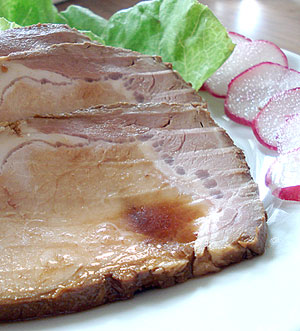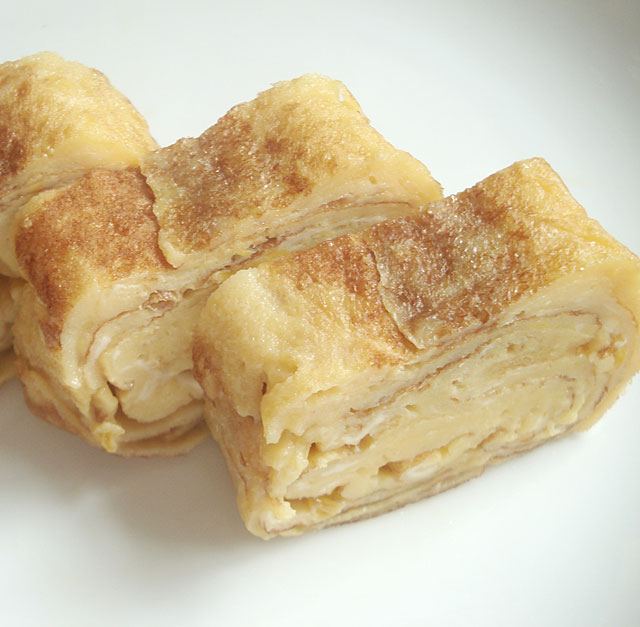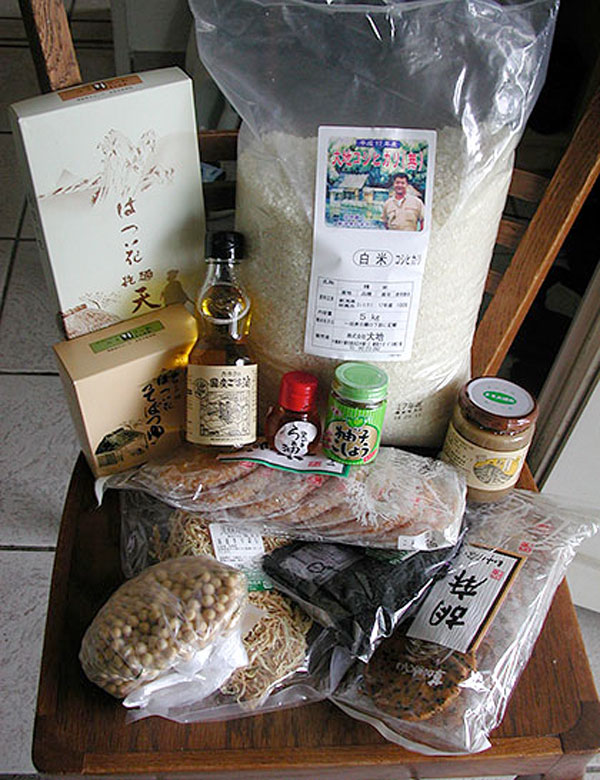
With summer just around the corner, I like to think of food that can be made well ahead and tastes great served cold, or at least cool, to keep me out of a hot kitchen. The vegetable part of this is usually taken care of with seasonal vegetable salads and the like. If the protein part means meat, I like to have pre-cooked pieces tucked away in the freezer.
One of my favorite cold meats is poached and marinated pork, or nibuta. (Ni means to cook in liquid, and buta is pig.) It's very easy to make, stores beautifully in the refrigerator for about a week or much longer in the freezer, and of course, tastes great - savory, slightly sweet, and very juicy. It can be sliced very thinly or julienned for one-dish meal salads or in sandwiches, or chopped up and added to stir-fries, wraps, and so on. It's a great addition to a bento box. It can be cubed or coarsely ground and used instead of char siu (roast pork) in steamed buns or bao. The possibilities are only limited by your imagination.
There's one unusual 'secret ingredient' in the poaching liquid, umeboshi or pickled plum. You can omit this if you like, but adding just one umeboshi seems to de-fat the meat a bit more than just poaching, plus making it taste a bit cleaner and fresher in an interesting way.
Filed under:
basics japanese weekend project summer pork meat

Tamagoyaki is such a integral part of Japanese food that I am rather kicking myself for not having posted a recipe for it before here. The name tamagoyaki means "fried egg", and the alternate name, atsuyaki tamago, means "thick fried egg". (Some books or restaurants erroneously called it just tamago, which just means "egg".) A slightly sweet, moist square-shaped egg concoction, tamagoyaki is a bento box staple, as well as being a popular sushi neta (topping). It's also great as a side dish for any meal.
Filed under:
basics eggs japanese bento washoku
A lot of Japanese dishes are quite subtly flavored to start with, and are eaten dipped in a simple soy sauce based dipping sauce. You're probably familiar already with the wasabi + soy sauce combination used for most kinds of sashimi and sushi, but there are a few others. Which sauce goes with which dish really seems to depend as much on tradition as anything, though certain combinations just fit better than others. The ratio of flavoring to soy sauce is a matter of personal taste in most cases.
Whenever using a dipping sauce, try not to dunk whatever you are eating into it. The common sushi eating mistake made is to dunk the rice side into soy sauce - this not only makes the rice grains go all over the place, often down your front, but absorbs way too much soy sauce. Turn the sushi over and dip the fish just a bit instead. (I tend to think that this rice-dunking is why a lot of the finer sushi restaurants nowadays serve their sushi pre-seasoned, needing no dipping.)
Here are the most commonly used dipping sauce combinations:
Filed under:
basics japanese ingredients
I own a lot of cookbooks that are published in the world of pounds, ounces and farenheit (mostly the U.S....British cookbooks nowadays have metric or both metric and imperial) and the rest of the world, which uses metric. I also read various web sites and food blogs from all over the world. Converting units from one and the other can be a bit of a bother, so I try to include both in my recipes. I am guilty of using American cup measurements sometimes, but I try to limit that to recipes were the amount doesn't have to be totally exact, such as for bread.
Filed under:
basics geekery
As part of my weight loss efforts, not to mention generally trying to 'eat better', flirting with 'makurobi' (the Japanese word for macrobiotic, and also meaning a 'hipper' version of macrobiotic cooking) and such, I've been cooking more brown rice as opposed to polished white rice. Fortunately my rice cooker has a gen-mai (brown rice) cooking setting.
Filed under:
basics japanese rice
Submitted by maki on 8 December, 2006 - 13:29
Since I posted my article about essential and not-so essential Japanese ingredients, a number of people have asked about the equipment I use for preparing Japanese food. It's taken me a while to get to it, but here it is finally. (You can consider this as a kind of gift guide for anyone who's into Japanese cooking too..'tis the season and all that after all!)
Type:
feature Filed under:
basics equipment japanese
In this episode of my continuing series exploring Japanese food basics, I'd like to explain the breakdown of a typical Japanese home meal, which differs quite a bit from a Western meal.
In Western culture, a meal consists of a light first course or two, followed by a main course, then smaller following courses. The most basic format is soup or appetizer, main course, then a dessert. The main course itself is centered around the protein part, whether it's meat, fish or something vegetarian, and the vegetables are starch are the side dishes.
Filed under:
basics japanese how-to
Submitted by maki on 9 August, 2006 - 17:15

My mother, who lives in Yokohama, occasionally sends me a box of Japanese food goodies. Since she is in her own way as much of a foodie as I am, she diligently scours the land for great sources of locally produced, artisanal and/or organically produced foods. Many of these foods are known under the umbrella term sanchi chokusou(産地直送), direct from where it was produced. If you think French people are hung up on terroir, you should read some Japanese food magazine ads for sanchi chokusou products.
Type:
feature Filed under:
basics japanese ingredients
Pages